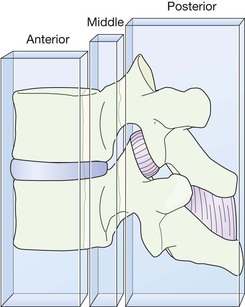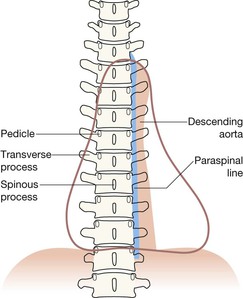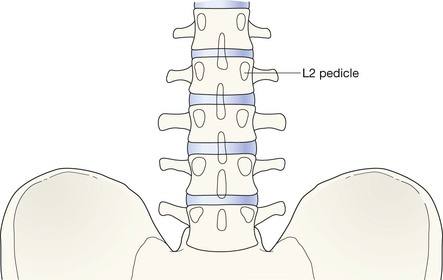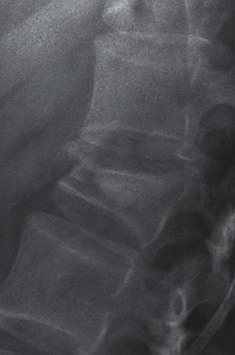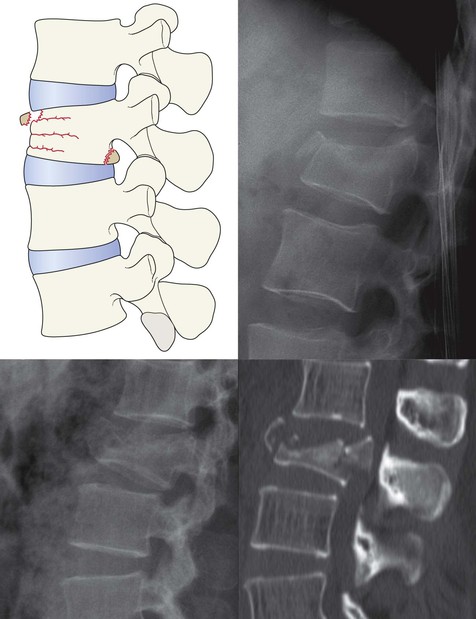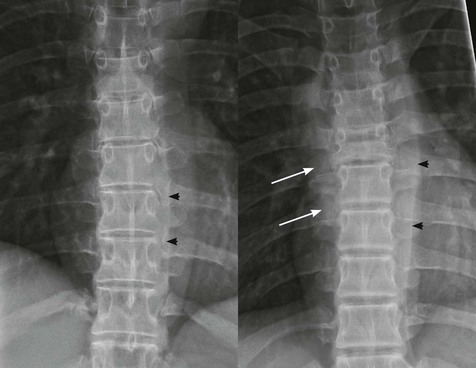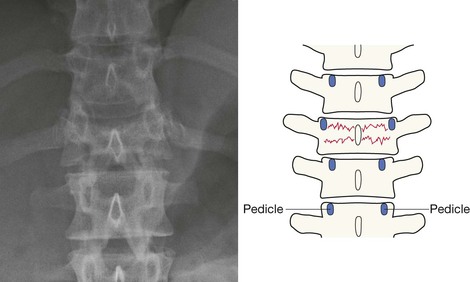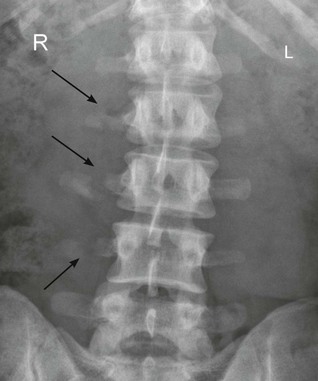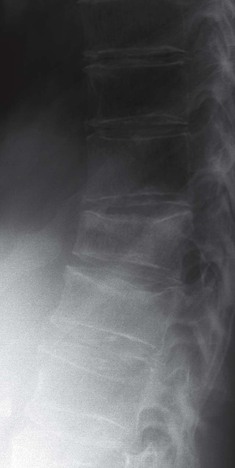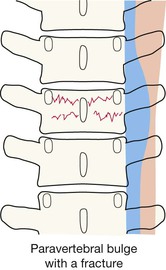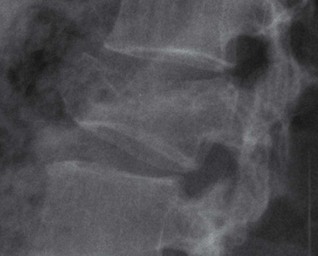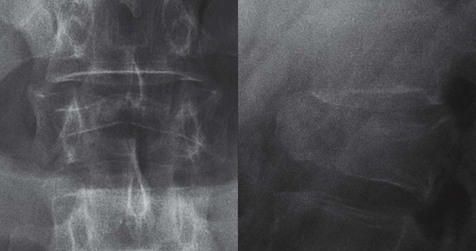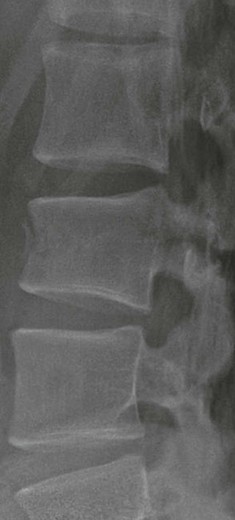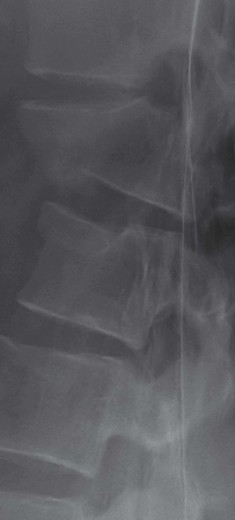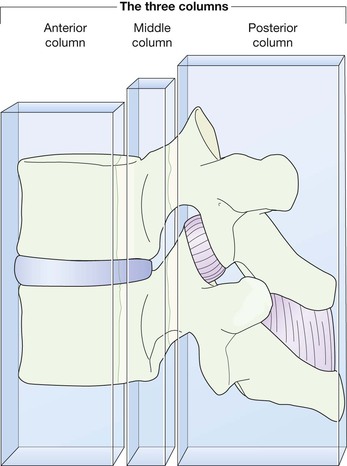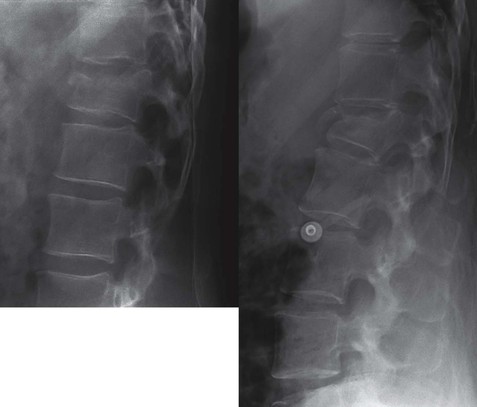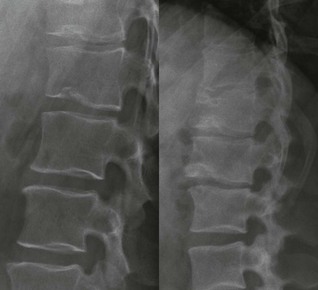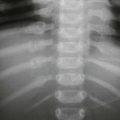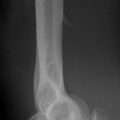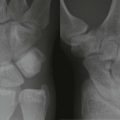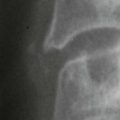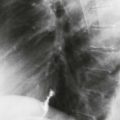Thoracic & lumbar spine
Analysis: the checklists
▪ The AP projection can provide useful information, but the lateral radiograph is invariably the more useful. 70–90% of detectable plain film abnormalities will be shown on the lateral projection7,8. Also, it is the lateral radiograph to which the three column stability principle1–3 is applied:
“Instability is present if any two of the three columns are disrupted”
On the lateral view
Look for:
▪ Loss of height or wedging of a vertebral body: this is evidence of a compression fracture. Wedging may be associated with loss of the normal concavity of the posterior aspect of the vertebral body9. This loss indicates significant posterior displacement of the middle column.
▪ Fragment(s) of bone detached from the anterior aspect of a vertebral body.
The common injury
There is only one common—ie regularly occurring—vertebral fracture.
Osteoporotic compression fractures10.
□ Vertebral compression fractures are common in an ageing population.
□ Radiologically the appearance on the lateral radiograph is that of a wedge compression fracture.
Less frequent but important injuries
Fractures following trauma
These important injuries are all consequent on high energy trauma. The forces acting at the time of a particular injury can be very complex.
Assessing stability by evaluating the three columns…
When a radiographic abnormality is detected it needs to be categorised as showing either a stable or an unstable appearance. Assess each of the three columns on the lateral radiograph (p. 200). In general, the term ‘stable injury’ should only be applied to minimal/moderate compression fractures with an intact posterior column.
Pitfalls
The right paraspinal line
This line is situated adjacent to the thoracic vertebrae and it is not seen in normal individuals. There is one exception: it may be visualised in some middle-aged and elderly patients because the pleura is displaced by age-related lateral osteophytes13. In these patients the visible right paraspinal line does not signify pathological tissue.
Dismissing transverse process fractures as trivial
If transverse process fractures are seen after high energy trauma. then it is important to assess the lumbosacral junction appearances most carefully14. Following severe high energy trauma transverse process fractures may be overlooked, or dismissed as minor, particularly in the presence of pulmonary, abdominal, vascular, or brain injury. Lumbosacral junction dislocation (a rare injury) frequently has fractures of several transverse processes on the AP view. This has given rise to the term “sentinal sign”.
Schmorl’s nodes14
These are focal indentations of the vertebral body end plates seen at all ages but most commonly in younger people. The aetiology of Schmorl’s nodes is controversial and their clinical importance remains undecided. They are a relatively common finding in the thoracic and lumbar spine. A Schmorl’s node should not be read as an important pathological finding.


